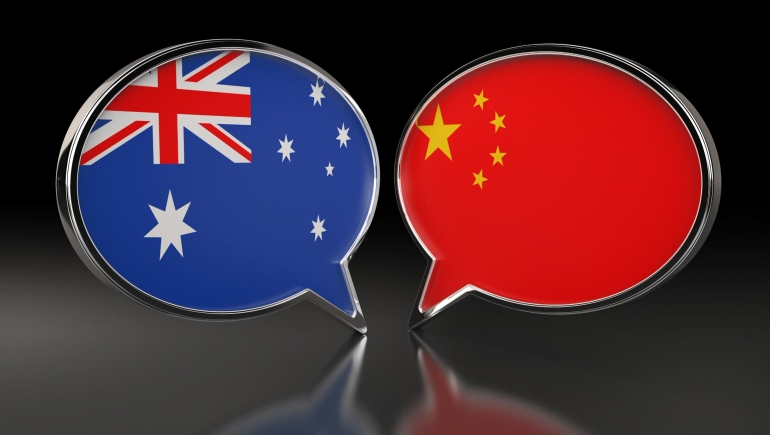Tue 18 April 2017
By Xue BAI (Sophia)
Background
The US withdrawal from the Trans-Pacific Partnership (TPP) has created political and economic uncertainty in Asia and beyond. China’s role in the context of international economic law may nevertheless be enhanced, given the potential for the Regional Comprehensive Economic Partnership (RCEP) to step in and fill in the gap where the TPP has failed. Given ongoing negotiating difficulties at the World Trade Organization (WTO), Australia and China may be able to play a more influential role in international economic law, particularly in the context of trade and investment. These two countries have already signed a bilateral investment treaty (BIT) (1988) and a preferential trade agreement (China-Australia Free Trade Agreement: ChAFTA) (2015).
The insightful presentation of Professor Tania Voon of Melbourne Law School shed light on obligations under the bilateral investment treaty (BIT) and preferential trade agreement (PTA) between Australia and China, within the broader context of Australia’s trade and investment treaties. In particular, the presentation focused on three key areas: intellectual property, services, and investor-State dispute settlement.
Intellectual Property
Intellectual property protection provides incentives for innovation and creativity, for example in developing new medicines. However, intellectual property provisions also need to make ensure that consumers have sufficient access to new products, such as innovative drugs. Intellectual property provisions in PTAs need to reflect a proper balance between these two perspectives. Professor Voon suggested that intellectual property provisions in some of Australia’s PTAs (particularly the Australia- United States Free Trade Agreement and subsequent treaties modelled on it) may disrupt the careful balance established in the WTO’s Agreement on Trade-Related Aspects of Intellectual Property Rights (TRIPS Agreement), constraining domestic policy and flexibility with potential negative implications.
ChAFTA does not follow the trend of increasing protections for intellectual property. For example, ChAFTA does not impose the increased copyright term found in Australia’s PTAs with the United States, Chile, Singapore, and South Korea, which is 70 years rather than the 50 years imposed under the TRIPS Agreement (counting from the death of the author or publication or creation). The extended term was criticised by Australia’s Productivity Commission in its 2016 report on Australia’s intellectual property arrangements.
Services
Trade in services provides an important means of contributing to economic growth and development, with Australia’s PTAs overlaying obligations on the WTO’s General Agreement on Trade in Services (GATS). In the chapter on cross-border trade in services under ChAFTA, China takes a ‘positive list’ approach to the core obligations of most-favoured nation treatment, market access, and national treatment, whereas Australia takes a ‘negative list’ approach. This means that these obligations apply to China only in service sectors specified by China. By contrast, for Australia the obligations apply with respect to all service sectors except those expressly excluded by Australia. In theory, as Professor Voon pointed out, the same results can be achieved from positive and negative lists. However, a negative list approach may be more transparent and ultimately more liberalising. In particular, a negative list may be more likely to impose obligations with respect to new services in dynamic sectors, which have been the subject of WTO disputes (eg concerning online gambling services and electronic distribution of sound recordings). The application of negative and positive lists to different parties as under ChAFTA is unusual. Australia may seek to persuade China to adopt a negative list approach as part of the forthcoming joint review of ChAFTA in certain services and investment areas, which is set to commence later in 2017.
Investor-State Dispute Settlement (ISDS)
ISDS mechanisms are included in all of Australia’s 20 BITs currently in force (including that with China) as well as seven of its PTAs (including ChAFTA). Several Australian investors have used these mechanisms to bring claims against foreign countries, while Australia has successfully defended its first claim against a foreign investor (Philip Morris Asia Ltd). ISDS under ChAFTA currently extends only to disputes concerning the national treatment obligation, while under the BIT between Australia and China it appears to have the potential to cover claims against China concerning the amount of compensation for expropriation and claims against Australia concerning a range of investment protections including expropriation and fair and equitable treatment. Again, this disparity may be addressed by China and Australia in the forthcoming ChAFTA review.
In terms of safeguarding regulatory autonomy, ChAFTA contains a novel mechanism regarding public welfare measures with respect to ISDS. When faced with an ISDS claim against such a measure, the respondent host State (eg Australia) may issue a notice to this effect, triggering a consultation process with the home State (eg China). If the States parties agree that the measure is ‘non-discriminatory and for the legitimate public welfare objectives of public health, safety, the environment, public morals or public order’, that determination is binding on the ISDS tribunal and the claim against that measure cannot proceed. This is a significant protection for policy space that may be followed in future treaties.
For more detailed discussion, please see Andrew D Mitchell, Elizabeth Sheargold and Tania Voon, Regulatory Autonomy in International Economic Law: The Evolution of Australian Policy on Trade and Investment (Edward Elgar Publishing, forthcoming) and Tania Voon and Elizabeth Sheargold, ‘Australia, China, and the Co-Existence of Successive International Investment Agreements’ in Colin Picker, Heng Wang and Weihuan Zhou (eds), The China Australia Free Trade Agreement: A 21st Century Model (Hart Publishing, forthcoming) (draft available at SSRN: https://ssrn.com/abstract=2905516).
